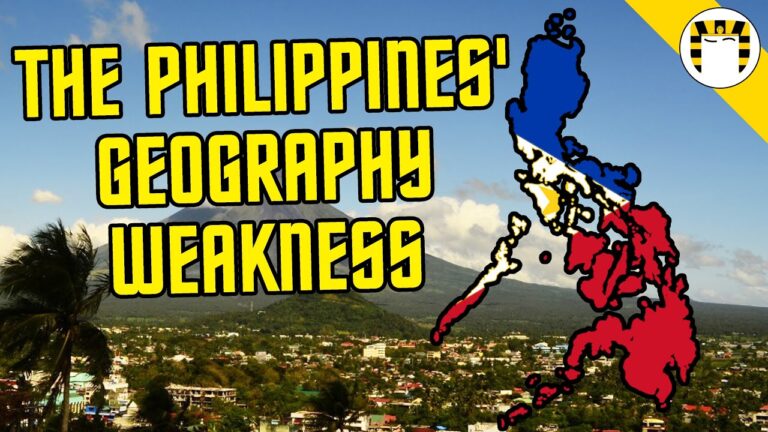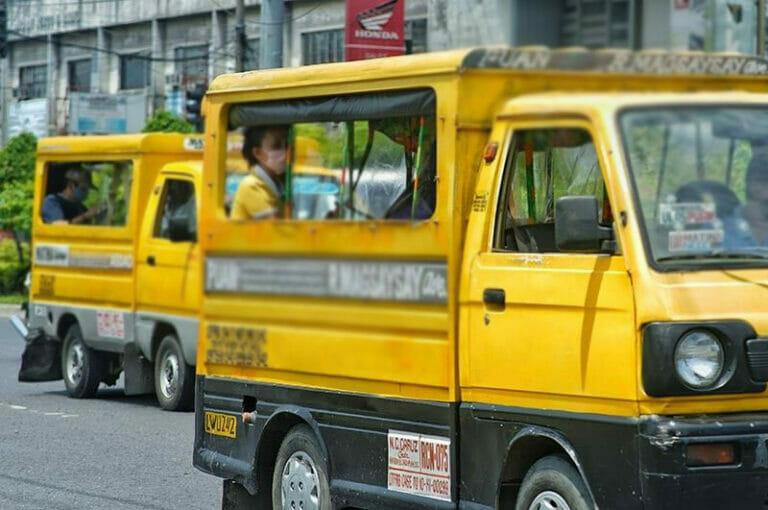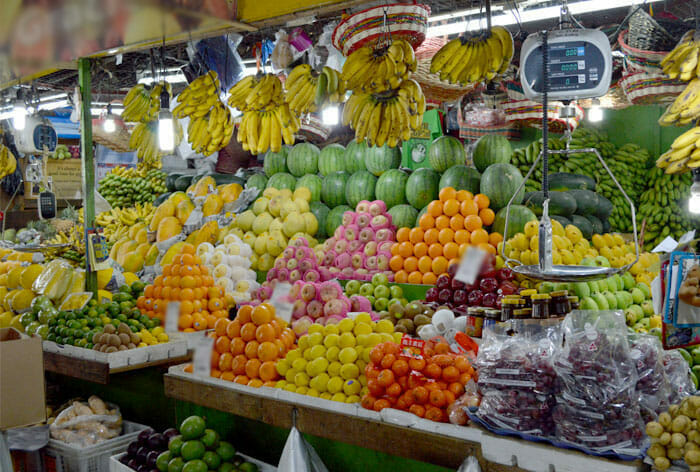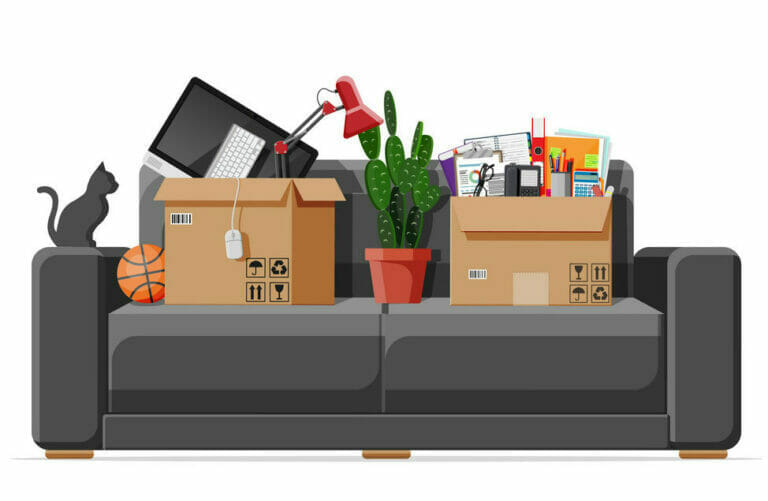The Philippines is a complex archipelago nation in the northeast of Southeast Asia, made up of 7,641 islands across an area that’s… probably larger than you think it is. This area is well known for having plenty of Spanish influences, but what were these islands like before the Spanish came? Furthermore, why was and is the archipelago so important? And how does the modern country integrate all 7,000 of its islands? First, let’s understand Philippine geography for context.
The modern Philippines can be easily divided into three island groups; Luzon, the Visayas, and Mindanao. Luzon as a region holds around 62 million people, while the island of Luzon by itself has a population of 53 million, alone making up more than half of the country’s population.
Luzon is also home to what’s known as Metro Manila, a megacity of 13 million made up of a collection of different cities, including the capital Manila and the largest individual city Quezon City. The city of Manila is the densest city in the world, with more than 43,000 people per square kilometer. That’s like 0.
04 people per square meter! For context, Macau, the most densely populated territory in the world, holds around 21,000 per square kilometer. In fact, the 2nd, 3rd, and 6th densest cities in the world are also located within Metro Manila. Luzon as a whole is highly urbanized, with some of the country’s biggest and most important deepwater ports, and accounts for nearly ⅔ of the country’s GDP.
As a region, Luzon is also associated with islands such as Mindoro and Palawan (together the Mimaropa Region) to the southwest, as well as the Bicol Region to the southeast.
Second are the Visayas, comprised primarily of Bohol, Cebu, Leyte, Negros, Panay, and Samar, though Palawan can sometimes also be included in this list. These islands speak several different yet closely related Visayan (or Bisayan) dialects, and are also where Ferdinand Magellan first landed, and was later killed. Lastly, Mindanao is the southernmost cluster of islands, and its western portion remains predominantly Muslim to this day. Mindanao itself is the second largest island after Luzon and is home to 26 million people, many of whom live in the largest city, Davao.
Mindanao however is also one of the poorer areas of the country, making up only 17% of the national economy, largely supported by agriculture, fishing, and forestry.
But before we learn more about what this country is like and what challenges it has to deal with nowadays… no no no, this is not an ad break, this video isn’t sponsored. What I was going to ask was, what was it like in the past? More specifically, what was it like before the Spanish arrived? These islands and these regions are essentially only one country because of, well, Spanish colonialism. Before the Spanish first arrived however, the map was a lot more fractured.
The first credible written record in the Philippines– written in a mixture of Old Javanese, Old Malay, and Sanskrit– dates back to around AD 900.
However the Philippine cultures also developed their own writing system from the 14th-16th centuries, an abugida known as Baybayin. I very briefly mentioned it in my video on why India (and also Southeast Asia) has so many writing systems, but Baybayin is part of the Brahmic family of writing systems, a descendant of Kawi, which itself descended from Brahmi, which may or may not (it’s still very disputed) descend from Aramaic, itself sharing a common ancestor with scripts including the likes of Latin, Cyrillic, and Arabic: Phoenician.
Back in those days, the islands were home to a whole host of different polities. While certain areas were often controlled by outside powers like the Brunei Sultanate, it was also home to small polities like Ma-i and Tondo.

These states often adopted a form of government known as Barangay, as small polities anywhere in size from small communities to city-states.
Rulers took one of many different titles depending on their region, from Sultans in Islamized areas, to Rajahs where there had been extensive contact with Malaysia and Indonesia, to Lakans among the Tagalogs. Interestingly, Barangays are a thing in the modern Philippines as well, though these centuries they’re the smallest administrative division in the country, just below municipalities, themselves just below the provincial level. As if to show just how diverse they have always been, the Philippines is divided into 134 ethno-linguistic groups, with 135 languages native to the country, the 135th being the national language Filipino, a variety of the Tagalog language, co-official in government alongside English. I guess it’s a little like how Indonesia’s national language, also to unite a group speaking hundreds of native languages across a diverse archipelago nation, is a Malay-based dialect called Indonesian.
With English being an official language alongside Filipino– and thus being a mandatory subject in school, while Spanish has no longer been required for decades now– the Philippines technically has the fourth largest population of English speakers in the world, with 30,000… native speakers, and around 90 million speakers in total.
The Philippines is one of the few countries in Asia to have Christianity as its major religion– I probably don’t need to tell you this is– because colonialism. Before they were taken over by the Spanish though, the Philippines were largely Islamic, and Hindu before that, and early folk beliefs before that, and part of Pangea before that. Back in the 14th century an explorer named Makhdum Karim left his province of Malacca, bringing Islam to the Philippines. He converted the Hindu King Rajah Baguinda of the Sultanate of Sulu to Islam (no, Star Trek fans, that is not a coincidence), then marrying his daughter.
Islam became increasingly popular after this conversion, following an inflow of Muslim traders from the Middle East, Malaysia and India.
Today the oldest mosque in the county is named after him, but just 140 years later another influential guy would show up in the Philippines. His name was Ferdinand Magellan. When it comes to colonialism, the Philippines is sort of like a reverse Thailand. When Magellan came to the islands in 1521 he claimed the archipelago for the Spanish crown, naming it after his friend Phil.
Then he was shot by an arrow and fatally killed on the island of Mactan.
Three further expeditions were sent, all ending in disaster, with Miguel López de Legazpi establishing the first Spanish settlement on the islands in Cebu in 1565, and Manila six years later. Alongside the soldiers however also came missionaries with the aim of converting the local population to Roman Catholicism, a mission which nowadays seems to have been about 82.9-85% successful, with the notable exception of the Muslim sultanates of Mindanao and Sulu. Then, to very briefly summarize things, there was a series of revolts throughout the 19th century, which were brutally suppressed, until the rebels started to gain the upper hand, at which point the US went in and basically said, “hey, y’all want some help fighting the Spanish (in exchange for another 50 years of foreign rule)?
” Traveling between the islands, both historically and in modern times is primarily done by… well you’re looking at the map, how do you think they go between islands?
The Rocinante? Aside from $20 Cebu Pacific flights, there also exist a series of privately and publicly-run ferries.
Many of these ferries might serve the Philippine Nautical Highway System, also called the Road Roll-on/Roll-Off Terminal (or RoRo) System, a series of three different integrated highway and ferry routes forming the backbone of the national transport system. Navigating within islands can also be difficult though, as these tropical, volcanic islands are incredibly mountainous and extremely forested.
Now you remember how I talked about how dense Metro Manila can be?
Turns out that also applies to cars, as Manila is infamous for its traffic (who’d have thought the densest city in the world wouldn’t be a good place for the least density-friendly form of urban transport imaginable?). According to the TomTom Traffic Index (as of 2019, just so we don’t have to account for COVID lockdowns), Manila was ranked 2nd most congested city in the world, scoring 71%, meaning a trip from point A to point B took on average 71% longer than it would have without congestion. It also doesn’t help how little the city’s public transport truly serves the demand it receives, with long waits for the MRT or LRT not unheard of.
Thus it is clear that Manila needs help with its mass transit woes (not you, Elon).
In addition, with them literally lying on their own tectonic plate, the Philippines is often subject to intense earthquakes and volcanic eruptions (I swear I’m not the only one noticing parallels between the Philippines and Indonesia, am I?). The 1991 eruption of Mount Pinatubo in particular required more than 20,000 be evacuated. Combine this with the increasingly frequent and violent typhoons due to man-made climate change, and the struggle of keeping up well functioning infrastructure becomes more and more apparent.
Even with all these geographical challenges to contend with though, the Philippines is still one of the most important countries in the Asia/Pacific region, even if they’re routinely forgotten about through what I like to call the New Zealand Effect.
.




